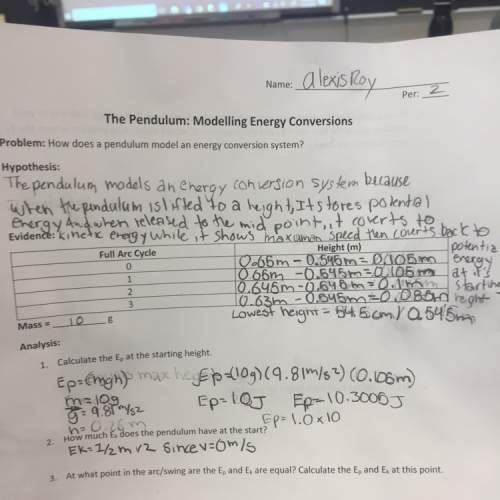
Physics, 19.11.2019 10:31 Demondevilg
Approximately how many kelvins are equal to 60 c? a. 289k b. 323k c. 333k d. 413k

Answers: 3


Another question on Physics

Physics, 21.06.2019 16:00
In a laboratory, nakisha mixes sodium hydroxide solution with an indicator called phenolphthalein. when combined, they create a pink solution. nakisha wonders if mixing other solutions with phenolphthalein will also create this pink color. how could she use the scientific inquiry process to explore it further?
Answers: 1

Physics, 22.06.2019 03:30
As part of an industrial process, air as an ideal gas at 10 bar, 400k expands at steady state through a valve to a pressure of 4 bar. the mass flow rate of air is 0.5 kg/s. the air then passes through a heat exchanger where it is cooled to a temperature of 295k with negligible change in pressure. the valve can be modeled as a throttling process, and kinetic and potential energy effects can be neglected. (a) for a control volume enclosing the valve and heat exchanger and enough of the local surroundings that the heat transfer occurs at the ambient temperature of 295 k, determine the rate of entropy production, in kw/k. (b) if the expansion valve were replaced by an adiabatic turbine operating isentropically, what would be the entropy production? compare the results of parts (a) and (b) and discuss.
Answers: 3

Physics, 22.06.2019 10:00
There are two-speed cameras, one in an are where the speed limit is 30 km/h and another where the speed limit is 50 km/h. in which will there be a smaller time interval between the photographs? explain your answer.
Answers: 1

Physics, 22.06.2019 19:30
Amass m = 74 kg slides on a frictionless track that has a drop, followed by a loop-the-loop with radius r = 18.4 m and finally a flat straight section at the same height as the center of the loop (18.4 m off the ground). since the mass would not make it around the loop if released from the height of the top of the loop (do you know why? ) it must be released above the top of the loop-the-loop height. (assume the mass never leaves the smooth track at any point on its path.) 1. what is the minimum speed the block must have at the top of the loop to make it around the loop-the-loop without leaving the track? 2. what height above the ground must the mass begin to make it around the loop-the-loop? 3. if the mass has just enough speed to make it around the loop without leaving the track, what will its speed be at the bottom of the loop? 4. if the mass has just enough speed to make it around the loop without leaving the track, what is its speed at the final flat level (18.4 m off the ground)? 5. now a spring with spring constant k = 15600 n/m is used on the final flat surface to stop the mass. how far does the spring compress?
Answers: 3
You know the right answer?
Approximately how many kelvins are equal to 60 c? a. 289k b. 323k c. 333k d. 413k...
Questions












History, 03.03.2020 02:22


Mathematics, 03.03.2020 02:22











